Guest Post by Bob Tisdale
(Oops. Corrected a typo in the title. This is Part 16 of this series.)
This post provides an update on the progress of the evolution of the 2014/15 El Niño (assuming there will be one) with data through the end of August 2014. The post is similar in layout to the past updates: May, June, July and August. The post includes 3 large gif animations and 15 illustrations so the post might take a few moments to load on your browser. Please click on the illustrations and animations to enlarge them.
Included are updates of the weekly sea surface temperature anomalies for the four most-often-used NINO regions. Also included are updates of the GODAS map-based animations of sea surface height anomalies, T300 anomalies (depth-averaged temperature anomalies to 300 meters), sea surface temperature anomalies, and the cross sections of temperature anomalies at depth along the equator. These animations start in January 2014 for the full progress of this year’s events. Also included are a couple of graphs of the BOM and the NOAA Equatorial Southern-Oscillation Indices (SOI and ESOI).
There’s a new the downwelling (warm) Kelvin wave making its way east along the equator in the Pacific, so we’ll continue to show the warm water volume anomalies and depth-averaged temperature anomalies from the NOAA TOA project website.
Then, we’ll take a look at a number of Hovmoller diagrams, comparing the progress so far this year to what happened in 1982. We had been using 1997 as a reference, but we’re well past this year’s event coming anywhere close to the one in 1997/98, so I’ve switched to 1982, which was a late bloomer.
ANOTHER CHANGE FROM PAST UPDATES
In earlier updates, with time-series graphs, we compared the evolution of the 2014/15 El Niño to the 1982/83 and 1997/98 El Niños. There’s no reason to continue to use the 1997/98 El Niño as a reference, so I’ve included the most recent strong El Niño (2009/10) along with the 1982/83 El Niño. No, I’m not saying this year’s El Niño, if one forms, will be as strong as the one in 2009/10. I’m simply using the 2009/10 El Niño as a reference.
NINO REGION TIME-SERIES GRAPHS
Figure 1 includes the weekly sea surface temperature anomalies of the 4 most-often-used NINO regions of the equatorial Pacific. From west to east they include:
- NINO4 (5S-5N, 160E-150W)
- NINO3.4 (5S-5N, 170W-120W)
- NINO3 (5S-5N, 150W-90W)
- NINO1+2 (10S-0, 90W-80W)
Of the four listed, the NINO3.4 region is the most commonly used sea surface temperature-based ENSO index. See the illustration here for the location of the NINO3.4 region. The NOAA Oceanic NINO Index is based on the sea surface temperatures of the NINO3.4 region.
As of the week centered on Wednesday August 27th, the sea surface temperature anomalies in the NINO4 and NINO1+2 regions were still elevated, while the NINO3 and NINO3.4 regions are warming (rebounding) but not yet at the threshold of El Niño conditions, where El Niño conditions are defined as sea surface temperature anomalies equal to or greater than +0.5 deg C.
Figure 1
EL NIÑO EVOLUTION COMPARISONS FOR NINO REGION SEA SURFACE TEMPERATURE ANOMALIES
Using weekly sea surface temperature anomalies for two NINO regions, Figure 2 updates the comparisons of the evolutions of this El Niño with the 1982/83 and 2009/10 events. The NINO3.4 and NINO1+2 comparisons were originally provided in the post Part 3 – Early Evolution – Comparison with 1982/83 & 1997/98 El Niño Events.
Figure 2
The weekly Reynolds OI.v2 data for Figures 1 and 2 are available through the NOAA NOMADS webpage here.
ANIMATION UPDATES
In the first post in this series, we discussed a number of animations of maps and animations of equatorial cross sections available from the NOAA Global Ocean Data Assimilation System (GODAS) website. Each cell of the animation is a 5-day (pentadal) average. Those animations ran from January 3rd to March 29th. The following are updates, again starting in January 3rd. GODAS only maintains their animations for 3 months. I’ve stored the maps since the first of the year and will continue to add maps as time progresses. That way we can watch the El Niño unfold from the beginning and then try to keep track of the warm water when El Niño is over.
Animation 1 provides the sea surface height anomalies and the depth-averaged temperature anomalies for the top 300 meters (T300) side by side.
Animation 1
Animation 2 is a similar side-by-side comparison, but on the left are maps of sea surface temperature anomalies and on the right are the T300 maps. The sea surface temperature maps trail the others by a pentad or two, which is why they do not run through July 2. (My apologies for the shift in the color scaling for the range of +0.5 to +1.0 deg C in the sea surface temperature anomaly maps. That appears to be a quirk of my computer, not the GODAS website.)
Animation 2
Animation 3 is an update of the cross sections of temperature anomalies at depth along the equator.
Animation 3
The following are links to the animations of the maps individually. There’s no color shift:
- Depth Averaged Temperature Anomalies (0-300 Meters)
- Sea Surface Height Anomalies
- Sea Surface Temperature Anomalies
The new warm anomaly in the western equatorial Pacific is shown in Figure 3. It has worked its way eastward with the Equatorial Undercurrent in the Pacific (the Cromwell current). The anomaly has also increased in strength as it worked its way to the east, because the subsurface waters in the east are normally cooler than they are in the west.
Figure 3
Curiously, the new Kelvin wave does not make its presence known along the equatorial Pacific in the GODAS sea surface height anomalies map (top cell of Figure 4), but it is visible in the depth-averaged temperature anomalies for the top 300 meters (bottom cell).
Figure 4
EL NIÑO EVOLUTION COMPARISONS WITH TAO PROJECT SUBSURFACE DATA
The NOAA Tropical Atmosphere-Ocean (TAO) Project website includes data for two temperature-related datasets for the equatorial Pacific. See their Upper Ocean Heat Content and ENSO webpage for descriptions of the datasets. The two datasets are Warm Water Volume (above the 20 deg C isotherm) and the Depth-Averaged Temperatures for the top 300 meters (aka T300). Both are available for the:
- Western Equatorial Pacific (5S-5N, 120E-155W)
- Eastern Equatorial Pacific (5S-5N, 155W-80W)
- Equatorial Pacific (5S-5N, 120E-80W)
Keep in mind that the longitudes of 120E-80W stretch 160 deg, almost halfway around the globe. For a reminder of width of the equatorial Pacific, see the protractor-based illustration here.
In the following three graphs, we’re comparing data for the evolution of the 2014/15 El Niño so far (through August 2014) with the data for the evolutions of the 1982/83 and 2009/10 El Niños. The Warm Water Volume data are the top graphs and the depth-averaged temperature data are the bottom graphs. As you’ll see, the curves of two datasets are similar.
Let’s start with the Western Equatorial Pacific (5S-5N, 120E-155W), Figure 5. The warm water volume and depth-averaged temperature data show the Western Equatorial Pacific presently have more warm water available in the western equatorial Pacific for an El Niño than during the evolutions of the 1982/83 and 2009/10 El Niños.
Figure 5
The warm water volume and depth-averaged temperature data for the eastern equatorial Pacific (Figure 6) show lower values in 2014 than in 1982 and 2009, indicating that the eastern subsurface equatorial Pacific is cooler now than it had been in those prior years. This year, the eastern equatorial data both rose, a result of the Kelvin wave carrying warm water from the West Pacific Warm Pool to the east. Most of that warm water in the east has now been consumed, either released to the atmosphere through evaporation or distributed away from the equator.
Figure 6
As a result, across the entire equatorial Pacific, Figure 7, warm water volume (top cell) is lower in 2014 than it was in 1982 and 2009. Looking at the depth-average temperature anomalies, they’re higher than they were in 1982 but lower than the 2009 August value. For this year, the warm water initially increased across the entire equatorial Pacific, as warm water from off the equator circulated to the equator. Then the warm water decreased as it evaporated or was redistributed from the equator.
Figure 7
The NODC has updated their Ocean Heat Content data for April to June 2014, but we’re still waiting for update at the KNMI Climate Explorer. It will be interesting to see what effect this off-season El Niño has had on the ocean heat content of the tropical Pacific.
SOUTHERN OSCILLATION INDEX (SOI)
The reasons an El Niño did not continue to form this year in response to the Kelvin wave are well established. First, the atmospheric component of ENSO, the “SO” part, refused to cooperate. That is, the trade winds in the western equatorial Pacific did not weaken as expected to help reinforce the El Niño development. (The other reason, of course, was the upwelling (cool) Kelvin that formed in the wake of the downwelling (warm) Kelvin wave. That trailing cool Kelvin wave had counteracted the earlier warm Kelvin wave, the latter of which had everyone so excited earlier this year…me included.)
The Southern Oscillation Index (SOI) from Australia’s Bureau of Meteorology is another widely used reference for the strength, frequency and duration of El Niño and La Niña events. We discussed the Southern Oscillation Index in Part 8 of this series. It is derived from the sea level pressures of Tahiti and Darwin, Australia, and as such it reflects the wind patterns off the equator in the southern tropical Pacific. With the Southern Oscillation Index, El Niño events are strong negative values and La Niñas are strong positive values, which is the reverse of what we see with sea surface temperature based indices. The August 2014 Southern Oscillation Index value is -11.5, which is within El Niño conditions. The BOM threshold for El Niño conditions is an SOI value of -8.0, so we’re there, the atmosphere is cooperating, according to the BOM SOI. Figure 8 presents a time-series graph of the SOI data.
Figure 8
The top graph in Figure 9 compares the evolution of the SOI values this year to those in 1982 and 2009, the development years of the strong 1982/83 and 2009/10 El Niños. The Southern Oscillation Index this year is lagging well behind the values in 1982, but it’s ahead of the game compared to 2009. Because the SOI data is so volatile, I’ve smoothed them with a 3-month filter in the bottom graph.
Figure 9
For those of you interested in keeping a closer eye on the BOM Southern Oscillation Index, see the BOM Recent (preliminary) Southern Oscillation Index (SOI) values webpage. For the past month, the 30-day running-average of the SOI has been cycling near to or within El Niño conditions.
BUT…Big but.
We’re getting a totally different indication from the NOAA Equatorial Southern Oscillation Index. As discussed in Part 8 of this series, the BOM SOI is based on sea level pressures off of the equator (where El Niños and La Niñas take place), and, as a result, the BOM SOI can be impacted by weather events that aren’t related to El Niño and La Niña events. The NOAA Equatorial Southern Oscillation Index is based on sea level pressures along the equator. (Data are here.) As shown in Figure 10, the Equatorial Southern Oscillation Index value for August 2014 is slightly positive, well with ENSO-neutral conditions, and leaning ever so slightly toward La Niña conditions.
Figure 10
But that does not mean an El Niño can’t form. The August 2014 Equatorial Southern Oscillation Index reading is comparable to the value in 2009, as is the most recent 3-month average. See Figure 11. But it’s far behind the development of the 1982/83 El Niño.
Figure 11
COMPARISONS OF HOVMOLLER DIAGRAMS OF THIS YEAR (TO DATE) WITH 1982
In past updates, in the following Hovmoller diagrams, I’ve used the development of the 1997/98 El Niño as a reference for this year’s El Niño. That now seems to be overkill, because the feedbacks never kicked in this year…where all of the feedbacks freakishly aligned for the 1997/98 El Niño. The 1982/83 El Niño was a late bloomer; that is, it didn’t really start to take off until later in the year, and it was a very strong El Niño too. So I’ve switched reference years for this post. Next month, I may switch over to the 2009/10 El Niño.
Hovmoller diagrams are a great way to display data. If they’re new to you, there’s no reason to be intimidated by them. Let’s take a look at Figure 12. It presents the Hovmoller diagrams of thermocline depth anomalies (the depth of the isotherm at 20 deg C) with 2014 on the left and 1982 on the right. GODAS, unfortunately, furnishes the illustrations (not the data) in different dimensions for the two years. The vertical (y) axis in both is time with the Januarys for both years at the top and Decembers at the bottom. The horizontal (x) axis is longitude, so, moving from left to right, we’re going from west to east…with the Indian Ocean in the left-hand portion, the Pacific in the center and the Atlantic in the right-hand portion. We’re interested in the Pacific. The data are color-coded according to the scales below the Hovmollers.
Figure 12
Figure 12 is presenting the depth of the 20 deg C isotherm along a band from 2S to 2N. The positive anomalies, working their way eastward since the beginning of 2014, were caused by the downwelling Kelvin wave, which pushes down on the thermocline (the 20 deg C isotherm). You’ll note how the anomalies grew in strength as the Kelvin wave migrated east. That does not mean the Kelvin wave is getting stronger as it traveled east; that simply indicates that the thermocline is normally closer to the surface in the eastern equatorial Pacific than it is in the western portion.
Figure 13 presents the 2014-to-date and 1982 Hovmollers for wind stress (not anomalies) along the equator. The simplest way to explain them is that they’re presenting the impacts of the strengths and directions of the trade winds on the surfaces of the equatorial oceans. In this presentation, the effects of the east to west trade winds at various strengths are shown in blues, and the reversals of the trade winds into westerlies are shown in yellows, oranges and reds.
Figure 13
The two westerly wind bursts shown in red in the western equatorial Pacific in 2014 are associated with the downwelling Kelvin wave, and the westerly bursts in March and May 1982 are associated with the Kelvin wave that year. (See the post ENSO Basics: Westerly Wind Bursts Initiate an El Niño.) Note how in 1982, as the June progressed through December, the negative wind stresses decreased (associated with a weakening of the trade winds), with the neutral whites expanding eastward. Also note the repeated westerly wind bursts in the western equatorial Pacific from June through November, with the big one in November 1982. Those westerly wind bursts throughout 1982 continued to help push warm water from the western equatorial Pacific into the east, strengthening the 1982/83 El Niño.
We’re, obviously, still waiting for some westerly wind bursts to help reinforce an El Niño in 2014. In fact, without westerly wind bursts, that downwelling (warm) Kelvin wave, the new one that’s presently working its way east, will probably not be strong enough to create an El Niño. For an El Niño to form, it needs atmospheric feedback in the form of extra westerly bursts to push additional warm water to the east.
Figure 14 presents the Hovmollers of wind stress anomalies…just a different perspective. Note how there were more positive wind stress anomalies in the western equatorial Pacific in 1982 than there have been so far this year.
Figure 14
And Figure 15 presents the Hovmollers of sea surface temperature anomalies. Unfortunately, the Hovmoller of sea surface temperature anomalies is delayed a few weeks. But as we’ve seen in the comparison graphs in Figure 2, the sea surface temperature anomalies of the NINO3.4 region in 2014 are well behind those of 1982, and the sea surface temperature anomalies this year in the NINO1+2 region are in line with those in 1982. As you’ll note in the Hovmoller for this year, it didn’t take long for the La Niña conditions in the eastern equatorial Pacific to disappear. The El Niño conditions also disappeared as quickly.
Figure 15
CLOSING NOTE
We discussed what appears to have been a climate shift in the Pacific in a recent post. See On The Recent Record-High Global Sea Surface Temperatures – The Wheres and Whys.
EARLIER POSTS IN THIS SERIES
- The 2014/15 El Niño – Part 1 – The Initial Processes of the El Niño.
- The 2014/15 El Niño – Part 2 – The Alarmist Misinformation (BS) Begins
- The 2014/15 El Niño – Part 3 – Early Evolution – Comparison with 1982/83 & 1997/98 El Niño Events
- The 2014/15 El Niño – Part 4 – Early Evolution – Comparison with Other Satellite-Era El Niños
- The 2014/15 El Niño – Part 5 – The Relationship Between the PDO and ENSO
- The 2014/15 El Niño – Part 6 – What’s All The Hubbub About?…
- The 2014/15 El Niño – Part 7 – May 2014 Update and What Should Happen Next
- The 2014/15 El Niño – Part 8 – The Southern Oscillation Indices
- The 2014/15 El Niño – Part 9 – Kevin Trenberth is Looking Forward to Another “Big Jump”
- The 2014/15 El Niño – Part 10 – June 2014 Update – Still Waiting for the Feedbacks
- The 2014/15 El Niño – Part 11 – Is the El Niño Dying?
- The 2014/15 El Niño – Part 12 – July 2014 Update – The Feedbacks Need to Kick in Soon
- The 2014/15 El Niño – Part 13 – More Mixed Signals
- The 2014/15 El Niño – Part 14 – Warm Water Recirculated?
- The 2014/15 El Niño – Part 15 – August 2014 Update – An El Niño Mulligan?
And for additional introductory discussions of El Niño processes see:
- An Illustrated Introduction to the Basic Processes that Drive El Niño and La Niña Events
- El Niño and La Niña Basics: Introduction to the Pacific Trade Winds
- La Niñas Do NOT Suck Heat from the Atmosphere
- ENSO Basics: Westerly Wind Bursts Initiate an El Niño
FURTHER READING
My ebook Who Turned on the Heat? goes into a tremendous amount of detail to explain El Niño and La Niña processes and the long-term aftereffects of strong El Niño events. Who Turned on the Heat? weighs in at a whopping 550+ pages, about 110,000+ words. It contains somewhere in the neighborhood of 380 color illustrations. In pdf form, it’s about 23MB. It includes links to more than a dozen animations, which allow the reader to view ENSO processes and the interactions between variables.
I’ve lowered the price of Who Turned on the Heat? from U.S.$8.00 to U.S.$5.00. A free preview in pdf format is here. The preview includes the Table of Contents, the Introduction, the first half of section 1 (which was provided complete in the post here), a discussion of the cover, and the Closing. Take a run through the Table of Contents. It is a very-detailed and well-illustrated book—using data from the real world, not models of a virtual world. Who Turned on the Heat? is only available in pdf format…and will only be available in that format. Click here to purchase a copy. Thanks. (I also am very happy to receive tips or donations.)
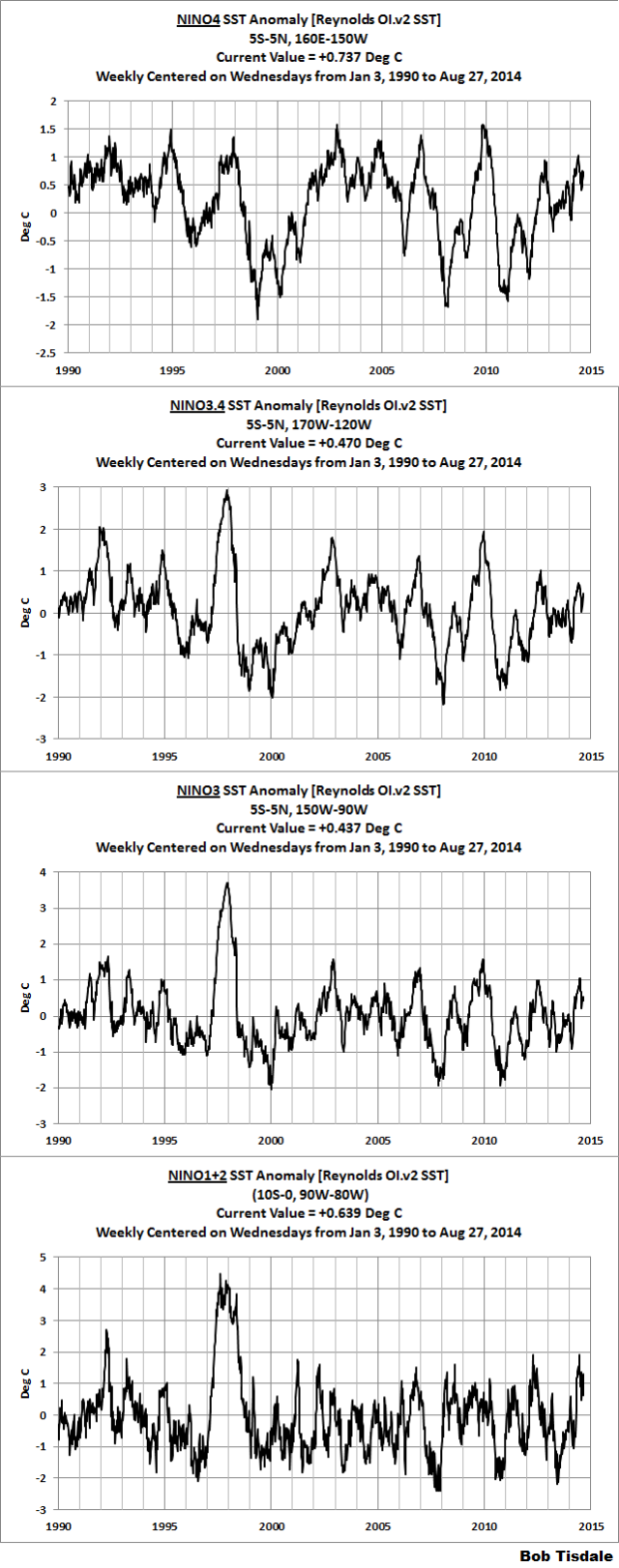
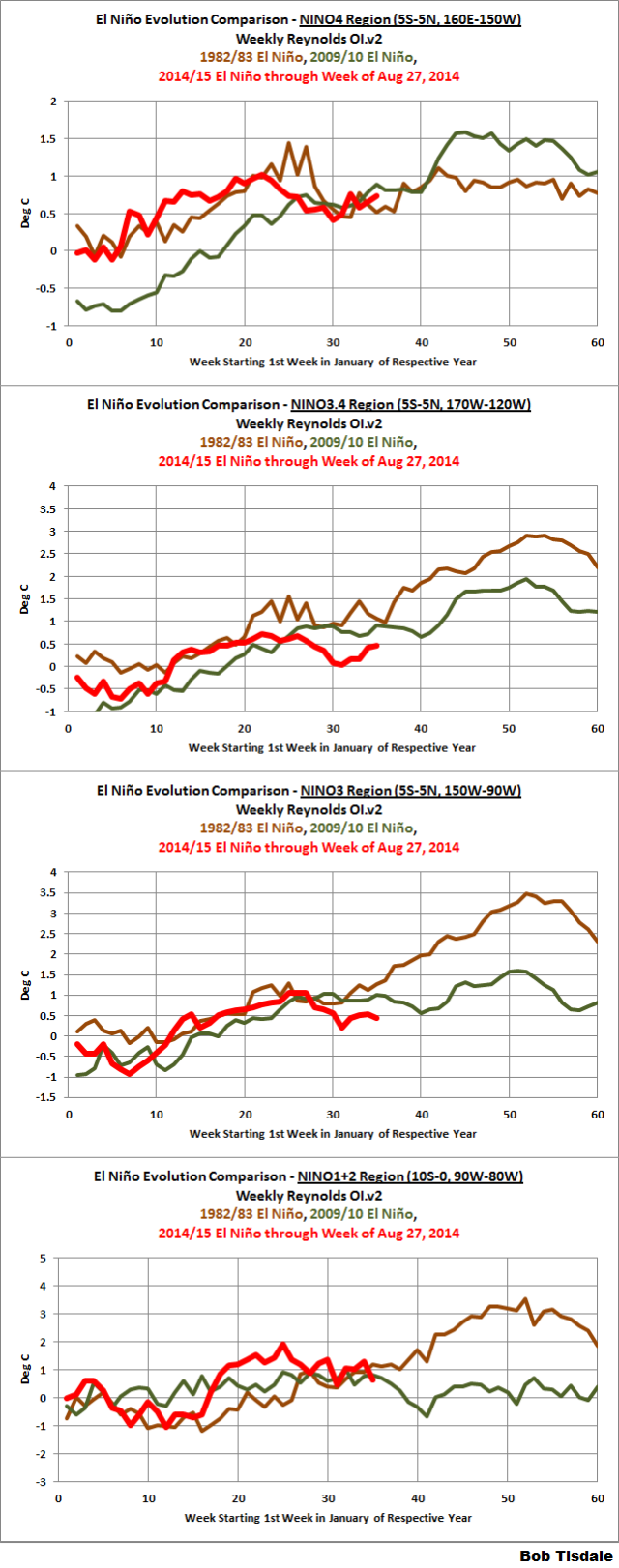
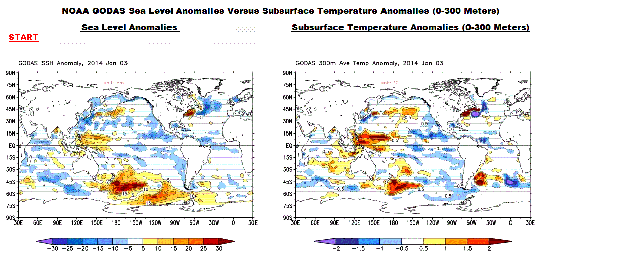

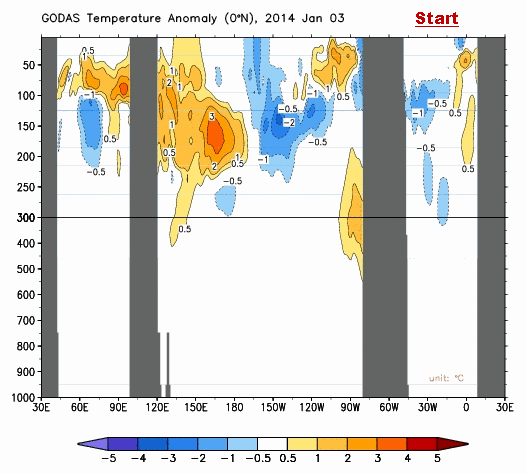
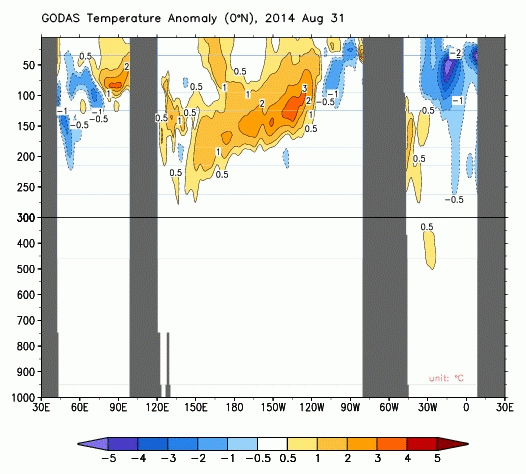
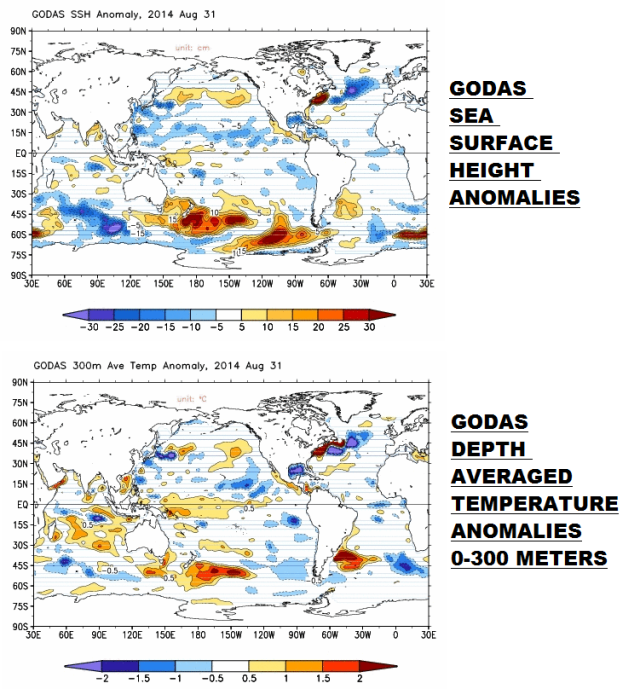


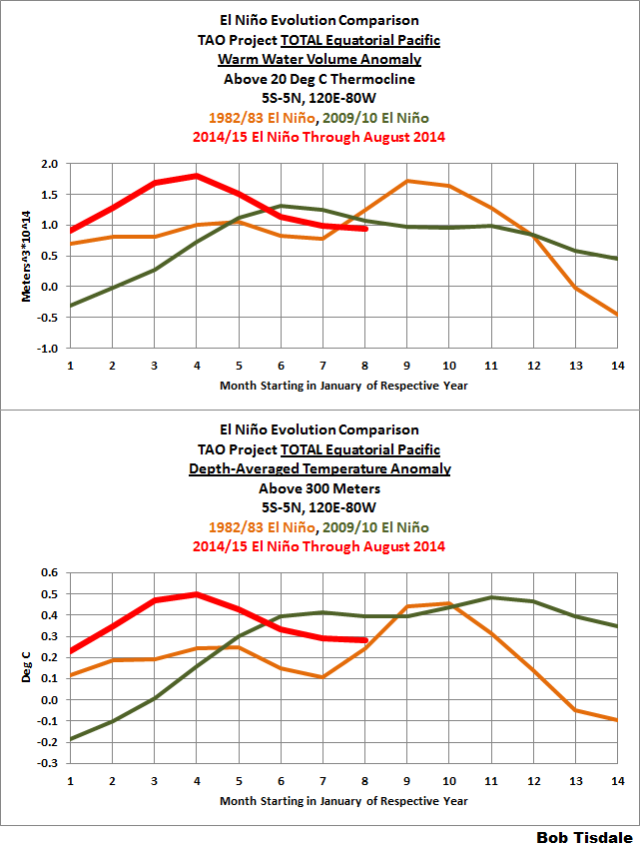
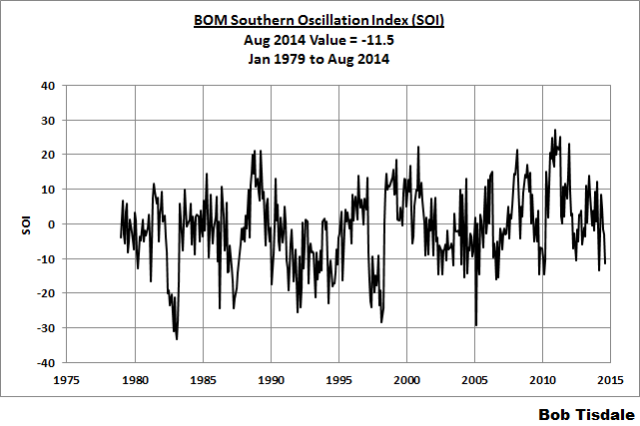

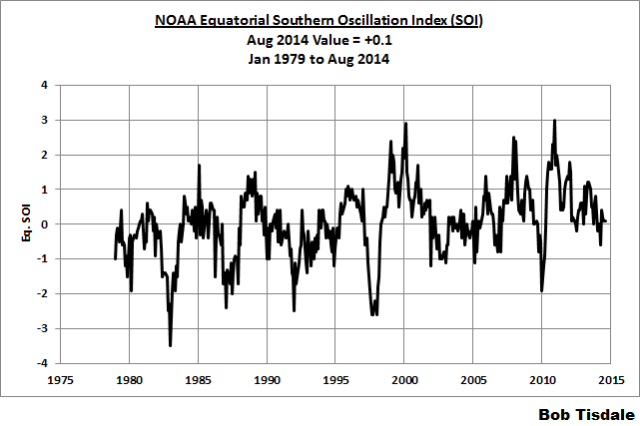


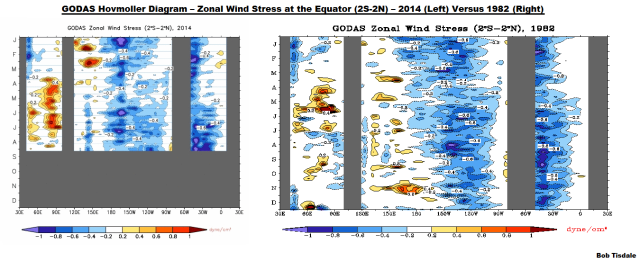
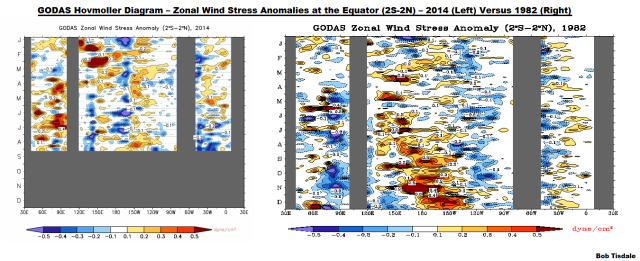
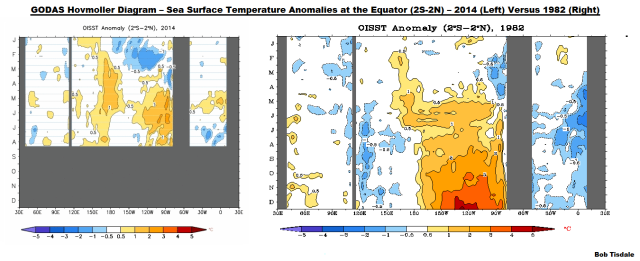
Thanks for the work and sharing.
You should pay attention to the sea level pressure anomalies in May-June-July.
Curious. Why? All across the equatorial Pacific or only under the book ends of the Walker Cell? And is it a leading indicator or a following one?
Because it’s the best indicator we have of coming warm or coldexreme
In southern middle and high latitudes of the Pacific and over Australia. Stephens et al. J of Clim.
Since you apparently understand the underlying mechanism and why this factor is important maybe you should explain to us all instead of making would-be savant, hit and run comments.
Who’s paying the freight ?
I assume nobody is forcing you to read this stuff.
More palatable websites are only a click away.
It’s in the literature
” For an El Niño to form, it needs atmospheric feedback in the form of extra westerly bursts to push additional warm water to the east.”
Which is why I doubt this whole orthodox account of ENSO creating itself
If there is a feedback, it does not have a choice of whether to “appear” or not , it just happens _whenever_ the base variable changes in either direction. That is what feedback means.
The description you give points to two independent conditions needing to coincide, quite likely an atmospheric cycle and ocean cycle happening in phase. It seems that this may be close to coming into sync but is not quite there.
Wait until next spring when the perigee full moon coincides with the equinox and we may see a more coordinated ENSO event.
BTW, that will produce maximum solar + lunar tide raising forces over the equator, this the sun directly overhead.
Thanks for yet another interesting and informative post.
Interesting that these NINO SST data show no warming trend whatsoever (i.e. since 1990). Someone should tell the US/EU govts, everyone else probably knows already.
Hi, Bob. I suggest inserting the word “barometric” in phrases like this:
“It is derived from the sea level pressures of Tahiti and Darwin”
Thanks, Bob. The animations are superb. The graphics complete a wide vision of the state of the Pacific Ocean. Time will tell, but I think a super El Niño seems not to be coming for 2014.
Thanks Bob for the update.
This new Kelvin wave seems much weaker than the previous one.
We’ve been waiting a long time for those westerly wind bursts. They will probably never come. If anything the trades have been strengthening.
Due to the annual phase locking of ENSO if a high Nina 3.4 holds on till the end of the year this could serve merely to “prime the pump” for a big La Nina at the start of 2015.
Hi Bob great graphics to illustrate what’s happening. My question I asked, I think, after the last update but didn’t get back to see if you had replied. Your answer, if it’s a repeat, may enlighten new readers. When I look at the animated anomalies with depth, are these anomalies relative to the normal temp at that depth, or are they anomalous relative to sea surface temperatures? If they are anomalies at the particular depth, it seems to me that you would get darker reds at the bottom of the volume of water. I think it would be less ambiguous if it were presented as contoured actual water temperatures.
Gary, the depth-averaged temperature anomalies (0-300 meter range) should have their own climatology. There would be no reason for them to use sea surface temperatures for the “normals” or a specific depth. They’d be the average temperatures for that depth range.
Your niño* SST graphs only go back to 1990 yet you are comparing the 2014/15 niño to the 1983/1983 niño.
The weekly Reynolds OI.v2 sea surface temperature data through the NOAA NOMADS website is broken down into two periods, Nov 1, 1981 to Dec 31, 1989 and Jan 3, 1990 to present.
http://nomad1.ncep.noaa.gov/cgi-bin/pdisp_sst.sh
Cheers
Weatherbell.com holds with the idea we put out in April. A central Pacific weak to moderate event warmer than the eastern pacific, in line with MEI/PDO bounceback theories we have
I have seen nothing that has changed this. THe MEI is in line with 02-03, 86-87,06-07, the soi tracking very close to 09-10. The 02-03, 09-10 event had plenty of cold enso 3.4 in front of them, the 86-87, 06-07 events were warm and that is a big deal that few people acknowledge.. Joe D Aleo is the guru on that relationship ( enso events when its been cold, as in a cold pdo set up that “spikes” warm are much shorter.
In short, no change.. get the woolies out
Get the woolies out? I’ve been wearing sweats indoors most of the summer, Joe. (I haven’t used air conditioning in years.) Not looking forward to a cold winter. Makes my knees hurt more than normal.
The eastern coast of NSW in Oz at least is receiving considerable rainfall over the last few weeks which is uncharacteristic of previous El Nino conditions even though the SOI is now running negative.
Bob
Has there been a connection to salinity and temperature of the oceans? I found this interesting http://physicsworld.com/cws/article/news/2009/jun/14/earths-magnetic-field-perturbed-by-electric-oceans-claims-researcher
jmorpuss , if your question is, Has there been a connection of ENSO to salinity and temperature of the oceans? I haven’t seen anything published about it.
Thanks for the link.
Regards
Bob,
Thanks for your great efforts. I have a question which you may have covered but sits uncomfortably with me.
When major El Ninos occur there seems to be a shift in T of a permanent nature (after la Nina balances). The ’98 one seemed to shift the avg T up about 0.25C.
My Q is why? Is it symptomatic of an underlying T increase which would have happened anyway in the absence of ENSO? Is it the “missing heat?” I ask that partly tongue in cheek but nevertheless it could signify some warming perhaps due to GHGs.
On the other hand would super La Ninas equally counteract it on a “permanent” basis? Intriguing!
tonyM: Why a strong El Nino shifts up surface temperatures: A strong El Nino releases a massive amount of warm water from beneath the surface of the West Pacific Warm Pool. It floods into the eastern tropical Pacific, rising to the surface, in what people refer to as an El Nino. After the El Nino, the warm water doesn’t disappear. It is transported back to the west Pacific and east Indian Oceans, where it remains on the surface. (Before the El Nino, the warm water was below the surface and excluded from the surface temperature record. During and after the El Nino, the warm water is on the surface and included in the surface temperature record.) It is subsequently redistributed from the East Indian and West Pacific.
The warm water wasn’t “missing” before the El Nino. We know where it was. It was in the West Pacific Warm Pool, and it was created by a decrease in cloud cover (an increase in sunlight) over the tropical Pacific during a preceding La Nina.
Regarding La Ninas, during the satellite era they have not caused any step downs in global surface temperatures. They have supplied the warm water for El Ninos, with ENSO acting as a recharge-discharge oscillator. La Nina is the recharge phase and El Nino is the discharge (and redistribute) phase, (though much of the redistribution happens during the trailing La Nina).
For further info, see the illustrated essay “The Manmade Global Warming Challenge” (42MB):
http://bobtisdale.files.wordpress.com/2013/01/the-manmade-global-warming-challenge.pdf
Regards
NODC has updated the ocean heat content series for the second quarter, 2014. Down slightly from quarter 1, 2014 in most measures.
We don’t need no stinking El Nino when we have Norbert to break the drought!
I think for this season we should be calling it an El Wedunno. 🙂
Thanks again Bob for the detailed posting!